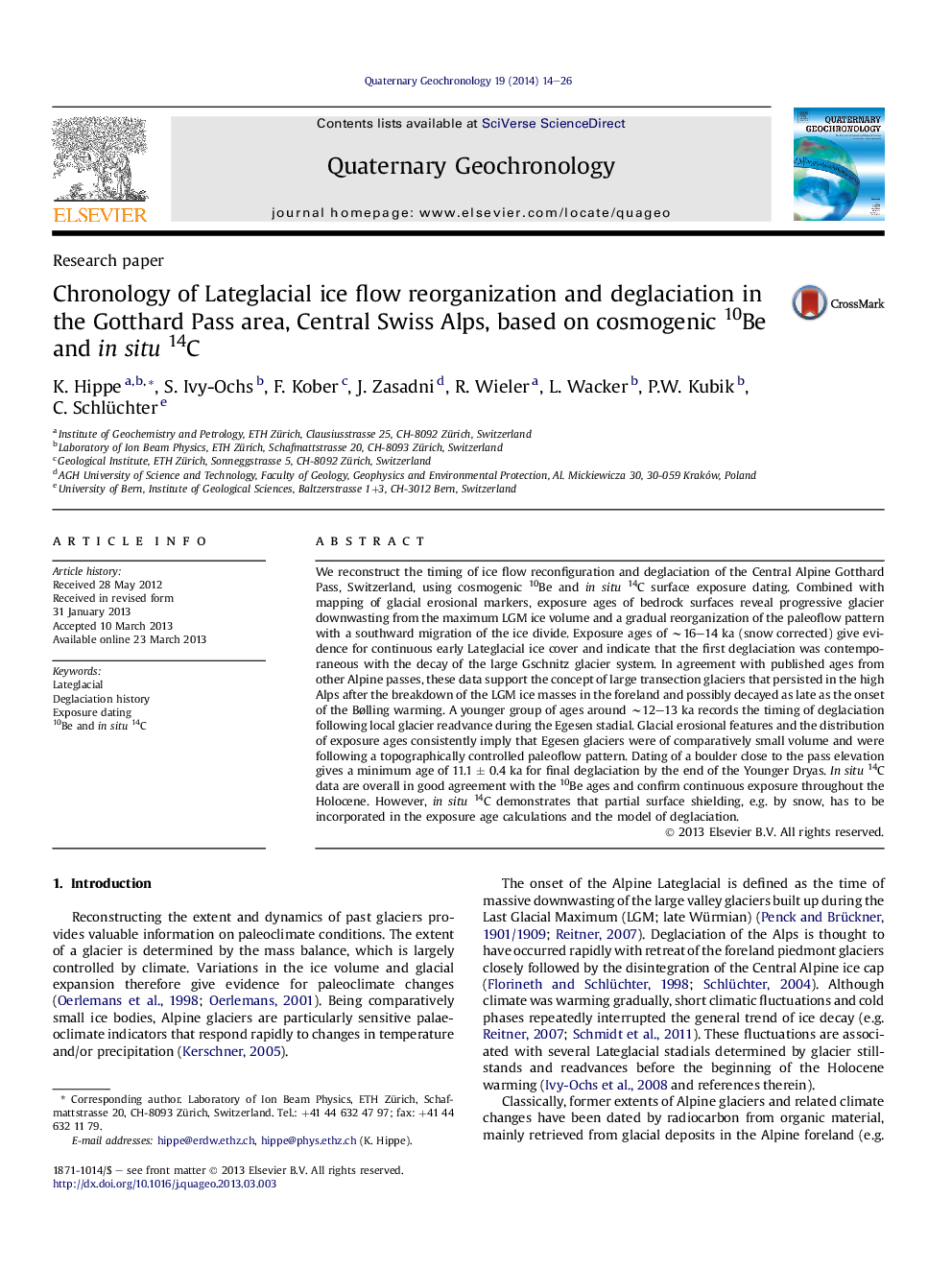| کد مقاله | کد نشریه | سال انتشار | مقاله انگلیسی | نسخه تمام متن |
|---|---|---|---|---|
| 4724997 | 1639857 | 2014 | 13 صفحه PDF | دانلود رایگان |

• We study the Lateglacial deglaciation history of the central Alpine Gotthard Pass.
• Bedrock exposure ages suggest continuous glacial cover throughout the Oldest Dryas.
• Glacial erosional features show a gradual reorganization of the ice flow pattern.
• Final ice-free conditions occurred after the decay of Egesen glaciers.
• Combined 10Be and in situ14C analyses give constraints on Holocene snow cover.
We reconstruct the timing of ice flow reconfiguration and deglaciation of the Central Alpine Gotthard Pass, Switzerland, using cosmogenic 10Be and in situ14C surface exposure dating. Combined with mapping of glacial erosional markers, exposure ages of bedrock surfaces reveal progressive glacier downwasting from the maximum LGM ice volume and a gradual reorganization of the paleoflow pattern with a southward migration of the ice divide. Exposure ages of ∼16–14 ka (snow corrected) give evidence for continuous early Lateglacial ice cover and indicate that the first deglaciation was contemporaneous with the decay of the large Gschnitz glacier system. In agreement with published ages from other Alpine passes, these data support the concept of large transection glaciers that persisted in the high Alps after the breakdown of the LGM ice masses in the foreland and possibly decayed as late as the onset of the Bølling warming. A younger group of ages around ∼12–13 ka records the timing of deglaciation following local glacier readvance during the Egesen stadial. Glacial erosional features and the distribution of exposure ages consistently imply that Egesen glaciers were of comparatively small volume and were following a topographically controlled paleoflow pattern. Dating of a boulder close to the pass elevation gives a minimum age of 11.1 ± 0.4 ka for final deglaciation by the end of the Younger Dryas. In situ14C data are overall in good agreement with the 10Be ages and confirm continuous exposure throughout the Holocene. However, in situ14C demonstrates that partial surface shielding, e.g. by snow, has to be incorporated in the exposure age calculations and the model of deglaciation.
Journal: Quaternary Geochronology - Volume 19, February 2014, Pages 14–26